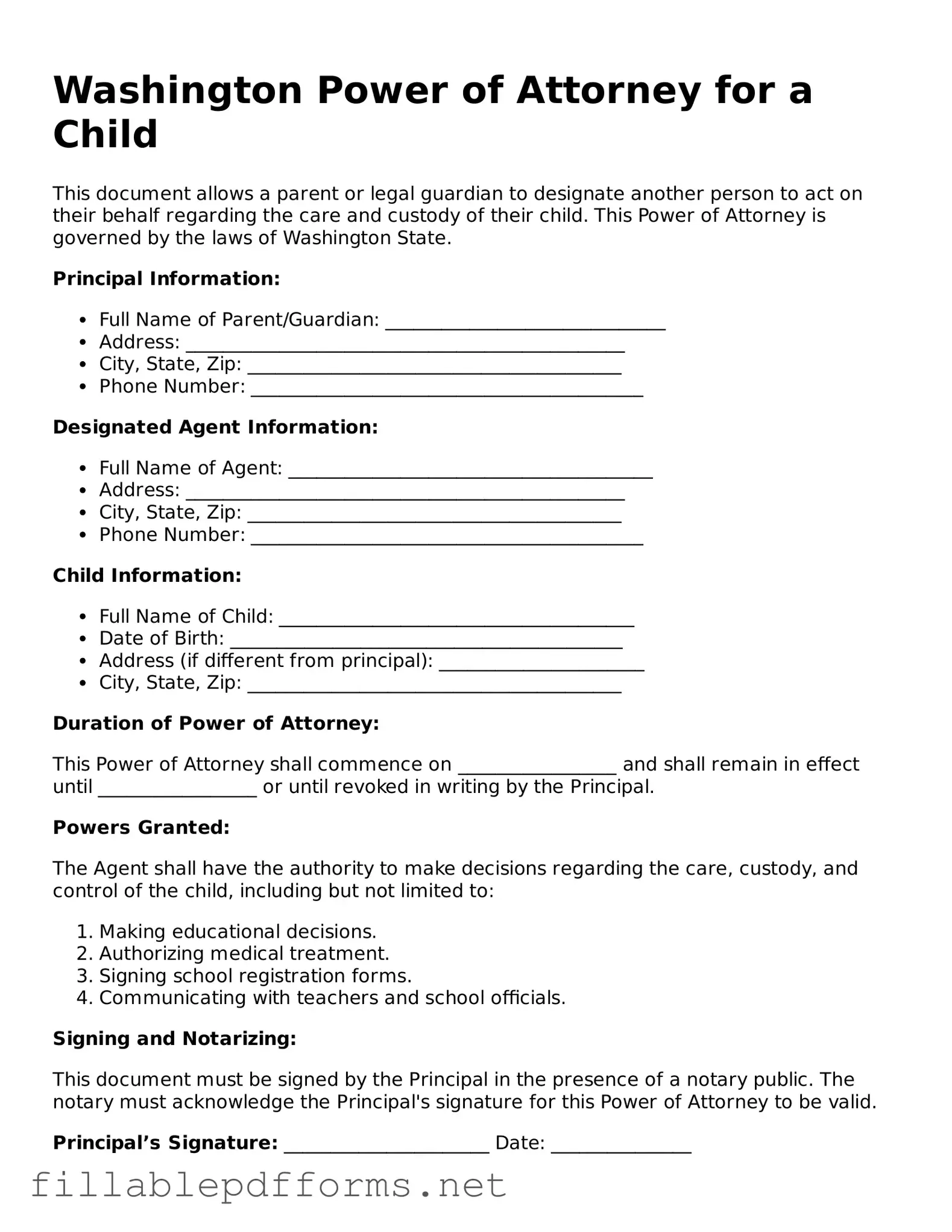Attorney-Verified Power of Attorney for a Child Form for Washington State
The Washington Power of Attorney for a Child form is a legal document that allows a parent or guardian to grant another adult the authority to make decisions on behalf of their child. This form is particularly useful in situations where the parent is unavailable, such as during travel or medical emergencies. By using this document, parents can ensure that their child's needs are met and that someone they trust is empowered to act in their best interest.
Launch Editor Here
